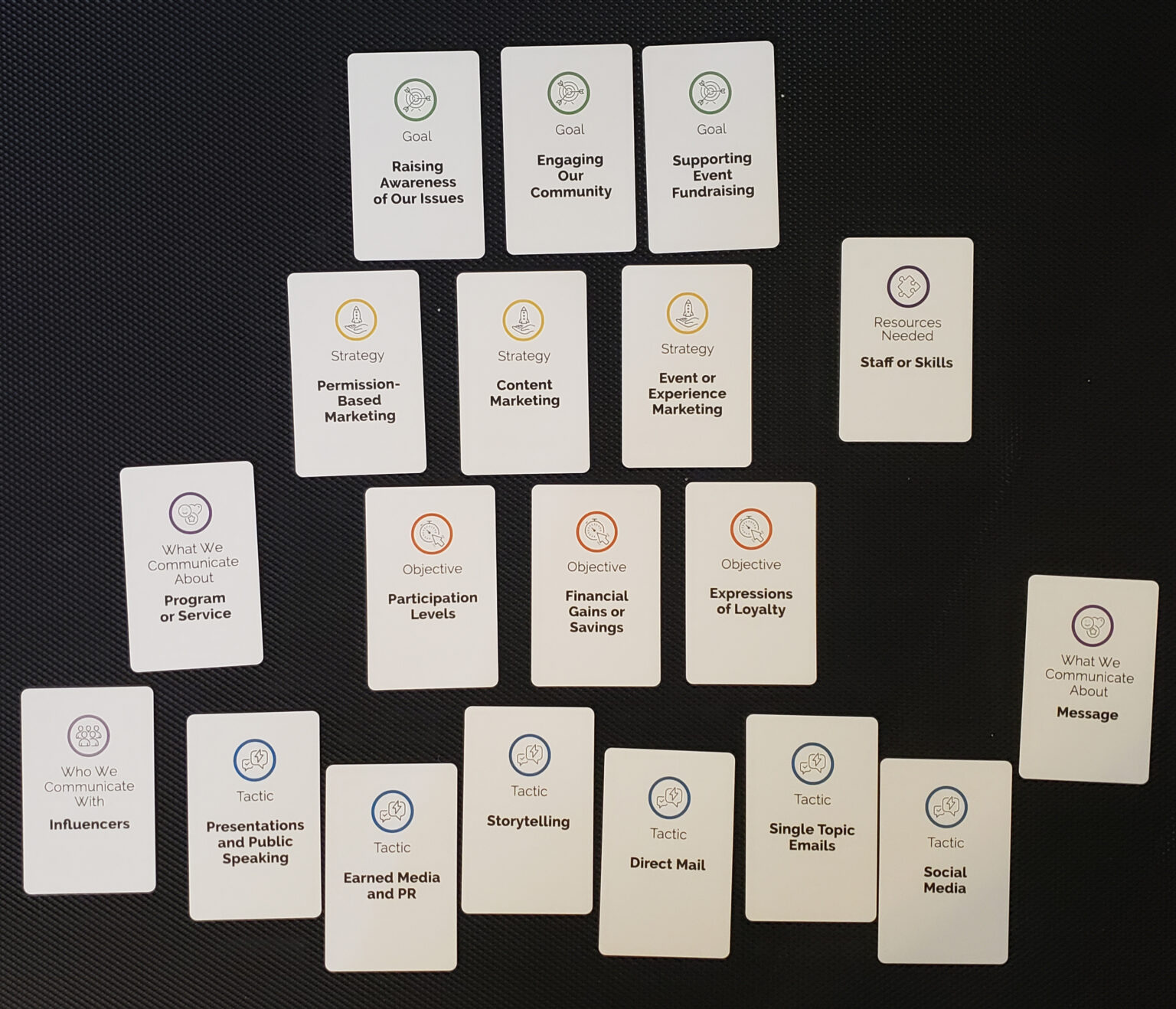
If you’ve been playing with our Nonprofit Communications Strategic Planning Card Deck, you might be wondering how many cards are too many for one person to handle.
Sticking with the card deck metaphor, I’m referring to the cards you are using as “your hand.” To encourage folks to be realistic about the comms workload, I challenge people to pick just 10 cards for their hand when creating their strategy, not including the customization cards. But really, using more like 15 cards and even 20 is fine, assuming it’s the right combination of cards.
But that is a BIG assumption. The appropriate combination is really the determining factor, not the number of cards per se. If the combinations make sense then the right 20 cards will actually be less work than 10 cards that don’t really go well together.
When I am coaching clients or participants in our Communications Director Mentoring Program through the creation of their strategies using the cards, here’s where those conversations most often go . . . hopefully, you can use this advice to help you sort out your own choices too.
The Goal Cards
First off, I am generally less concerned about the number of goal cards compared to all the others. Our research shows that having a lot of communications goals isn’t as bad as you might assume.
The Strategy Cards
Virtually every nonprofit is going to have Permission-Based Marketing and Content Marketing in their hand. They will likely have another one to three strategy cards. As long as they don’t go over five strategy cards, it’s generally OK.
Just make sure those strategies work together collectively to meet your goals. If you are really struggling to keep it to five strategy cards or less, that tells me you are all over the place and need a lot more focus.
The Objective Cards
This is where we need the most focus. Using more than three to five cards here is typically a sign of big trouble.
That’s especially true when using several of the objectives that tend to be harder to measure, such as Change in Knowledge and Understanding, Increased Readiness and Empowerment, Expressions of Trust, and Levels of Influence. It’s OK to pair one of these more challenging objectives to measure with some that are easier (like Financial Gains; Joining, Subscribing and Following; and Participation Levels, for example), but typically not more than one. I encourage a lot of conversation around the Objective cards for that reason.
The Tactic Cards
Having a lot of tactics is not automatically a bad thing as long as those tactics play very nicely together. By play nicely, I mean repurposing is easy.
If you are really good at creating versatile content and repurposing that content between many channels, you can include a lot more tactic cards in your hand. That likely also means you have clear workflows for creating content.
If this is not the case, and you are struggling to create good content, manage your communications channels, and do all of that consistently, then I encourage you to back down the number of tactics to your very top priorities.
You can also focus on the cards that represent the majority of your comms work (or where you should put your future energy and emphasis if this is a forward-looking plan, rather than a description of what you are doing now).
Do you have more questions about using the Nonprofit Communications Strategic Planning Card Deck?
Just let us know!






